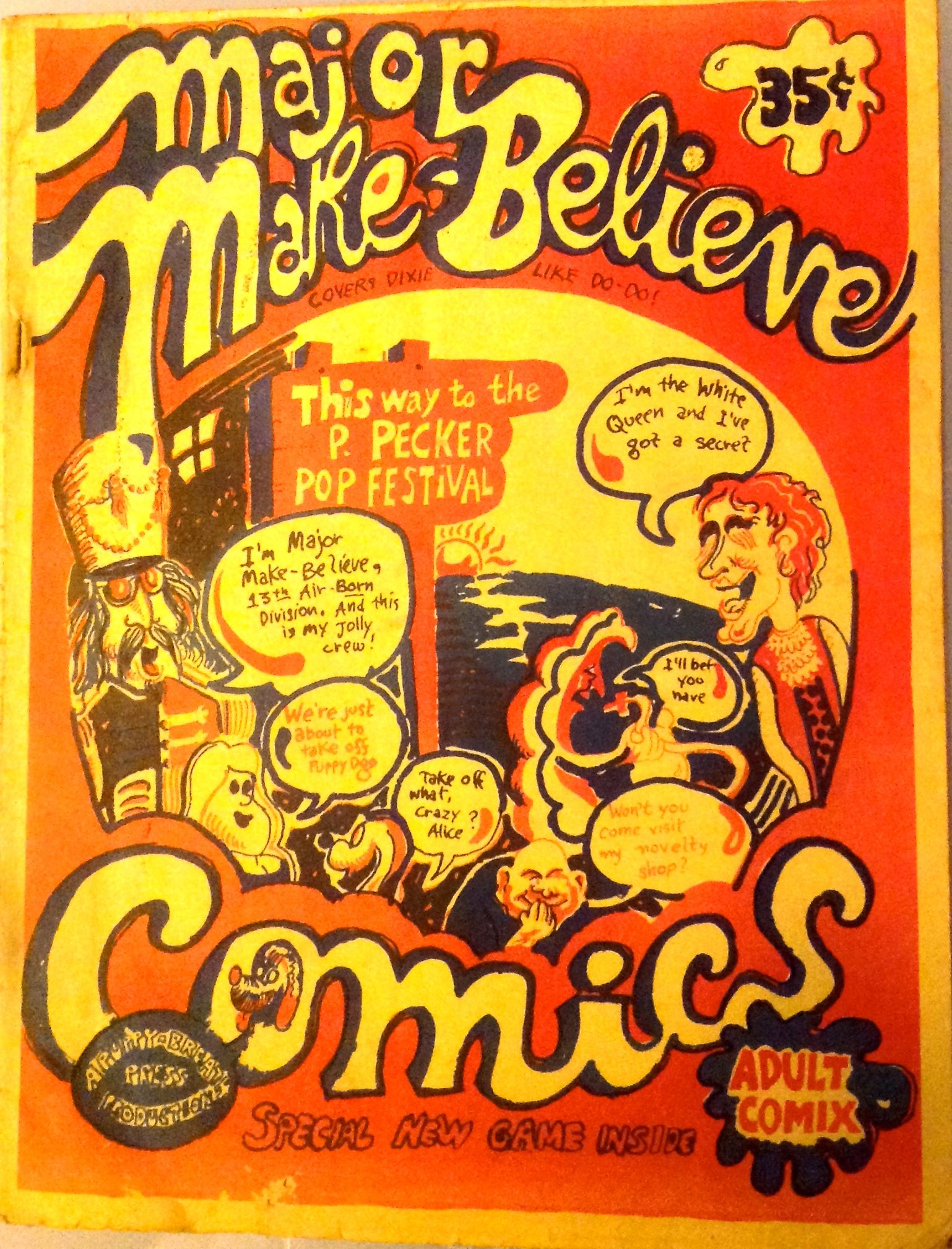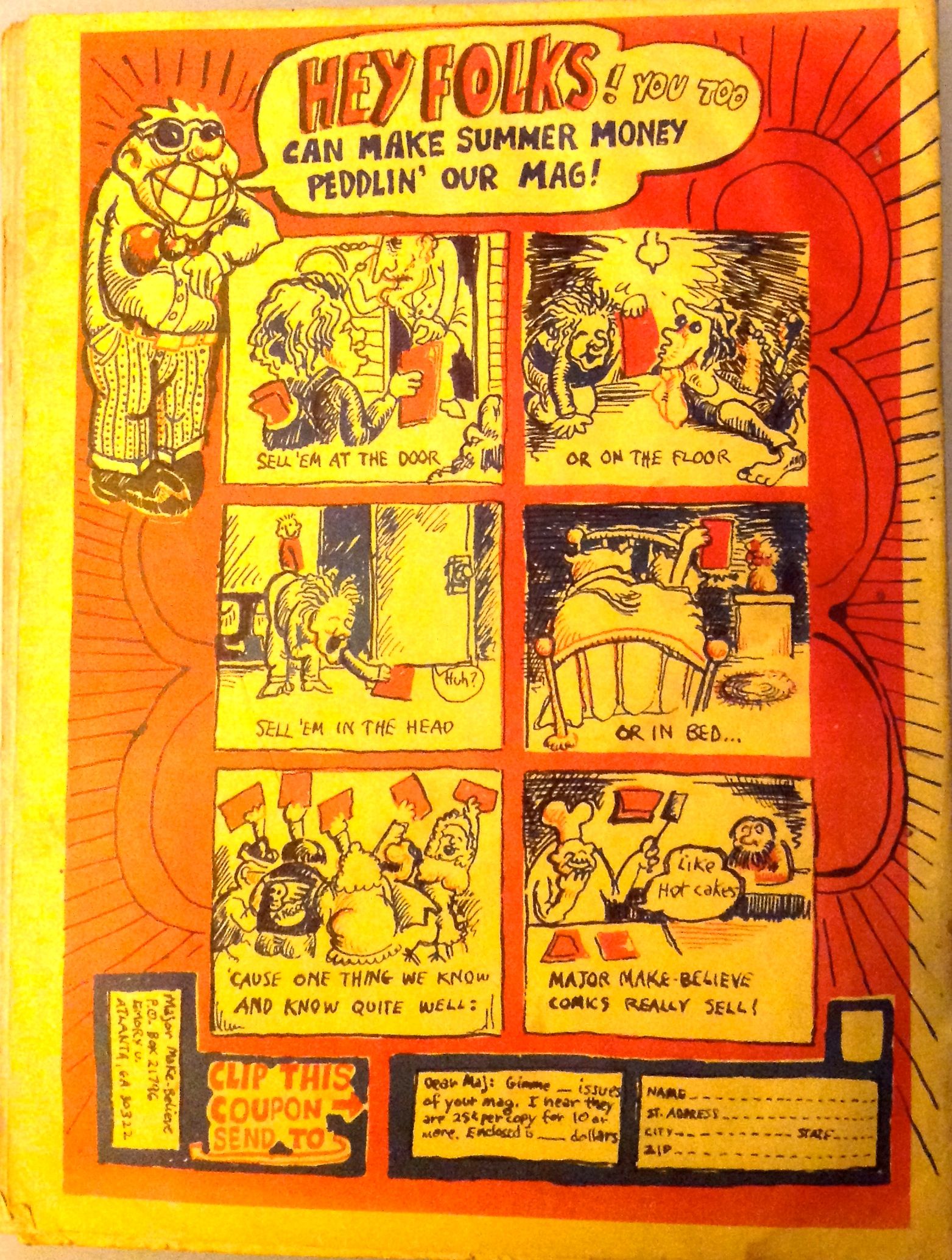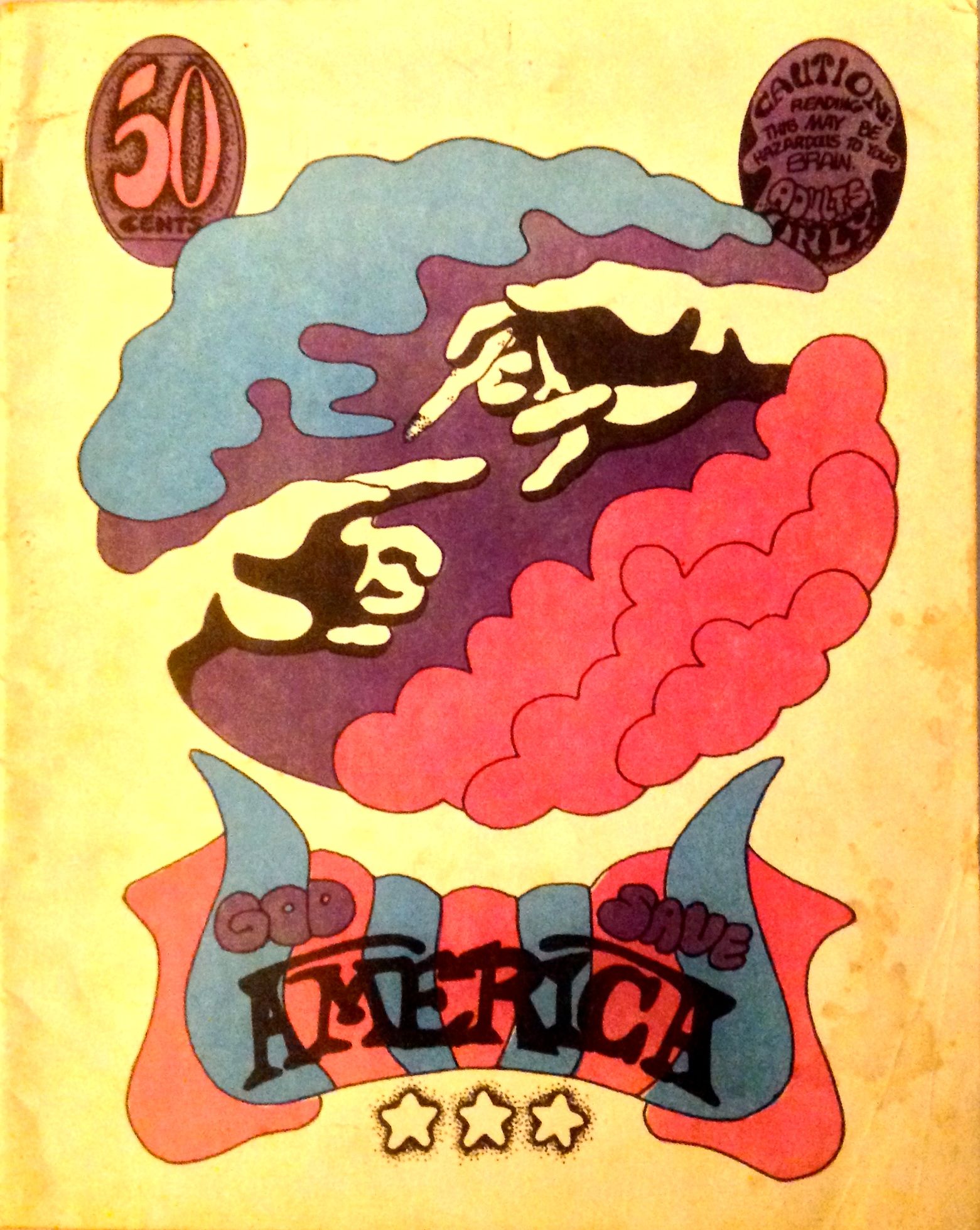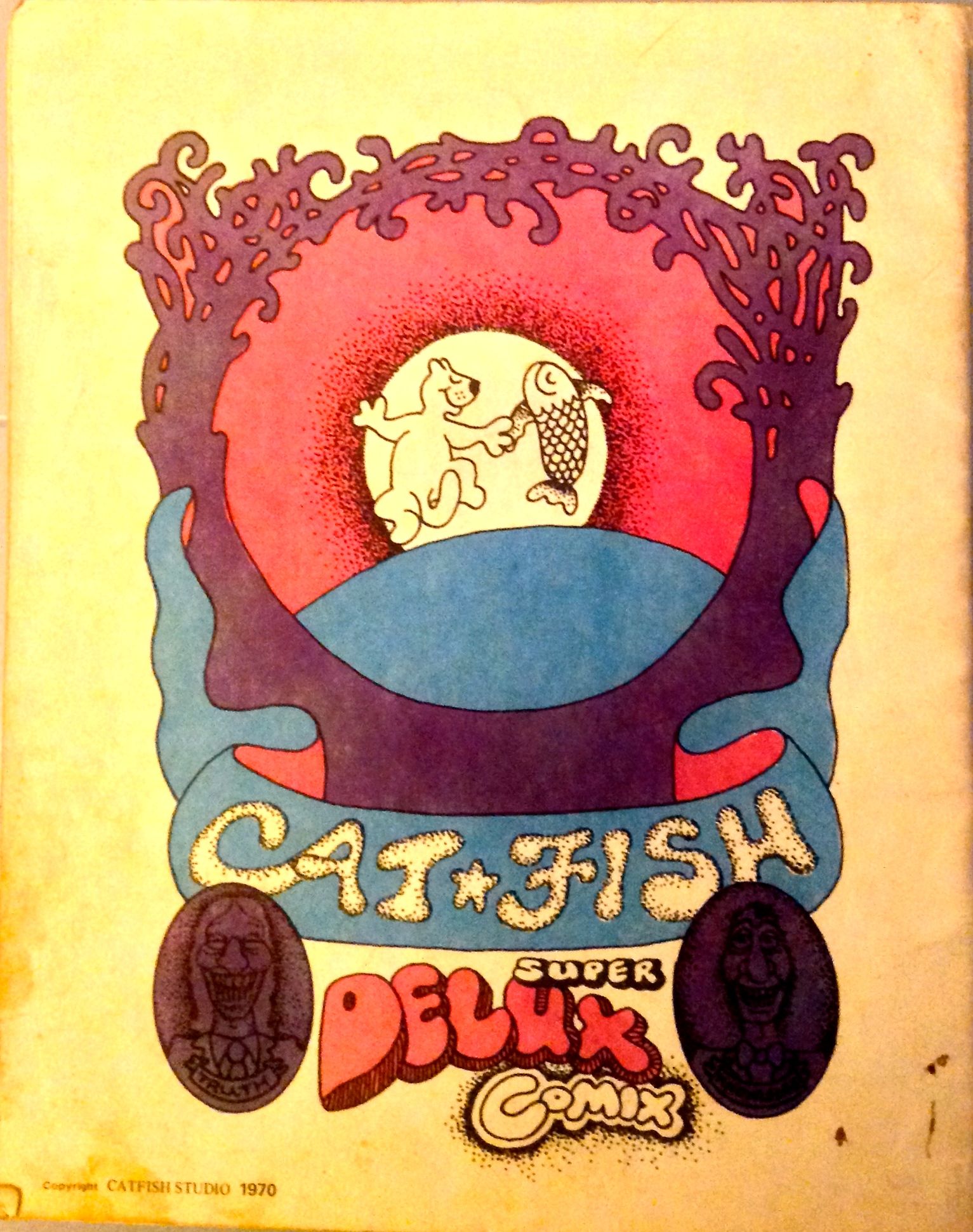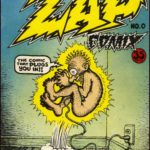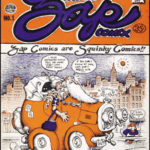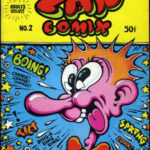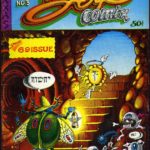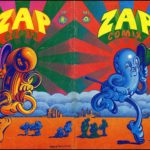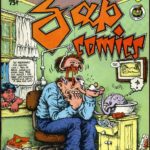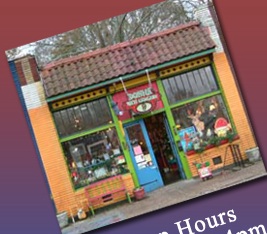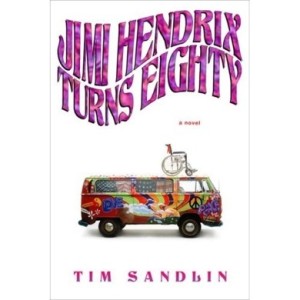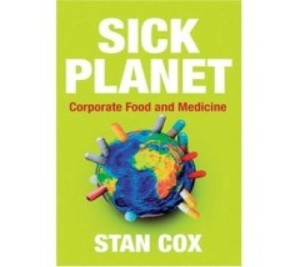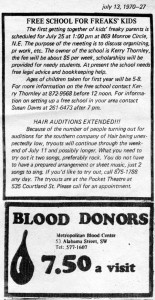Atlanta Hippies loved Underground Comics! Mr. Natural was Keepin’ on Truckin’ everywhere. The Celestial Omnibus sported Mr. Natural. Atlanta also had its own underground comics. Here are the few I have. Anyone have more to share?
Category Archives: feed your head
Ode to Dock Ellis
Ode to Dock Ellis
The recently deceased Dock Ellis is famous for pitching a no-hitter while tripping his balls off. There’s actually a song written about the incident.
Dock Ellis’s No-No
It was a lovely summer’s morning
An off-day in LA
So thought one Dock Ellis
As he would later say
His girlfriend read the paper
She said, “Dock, this can’t be right…
It says here that you’re pitching
In San Diego tonight”
“Got to get you to the airport”
And so off Dock Ellis flew
His legs were a little bit wobbly
And the rest of him was too
Took a taxi to the ballpark
An hour before the game
Gave some half-assed explanation
Found the locker with his name
Time came to go on out there
Down the corridor
The walls were a little bit wavy
There were ripples in the floor
He went out to the bullpen
To do a bunch of stretches
Loosen up a little
Throw his warm-up pitches
All rose for the national anthem
People took off their hats
Fireworks were exploding
The cokes were already going flat
Dock was back there in the dugout
So many things to watch
Some players spit tobacco juice
Others grabbed their crotch
The umpire hollered, “Play Ball!”
And so it came to be
Dock’s Pirates batted first
And when they went down 1-2-3
Dock’s catcher put his mask on
And he handed Dock the ball
It was 327 feet
To the right & left field walls
The Pirates took the field then
And Dock stood on the rubber
He bounced a couple of pitches
And then he bounced a couple others
You might say about that day
He looked a little wild
The lead-off batter trembled
Nobody knew why…Dock Ellis smiled
You walk 8 and you hit a guy
The things that people shout…
Especially your manager
But he didn’t take Dock out
Dock found himself a rythym
And a crazy little spin
Amazing things would happen
When Dock Ellis zeroed in
Sometimes he saw the catcher
Sometimes he did not
Sometimes he held a beach balll
Other times it was a dot
Dock was tossing comets
That were leaving trails of glitter
At the 7th inning stretch
He still had a no-hitter
So he turned to Cash, his buddy
Said, “I got a no-no going”
Speaking the unspeakable
He went back out there throwing
Bottom of the ninth
& He stood high upon the mound
3 more outs to go
He’d have his name in Cooperstown
First up was Cannizzaro
Who flied out to Alou
Kelly grounded out for Dean
The shortstop yelled, “That’s two”
It must’ve been a mad house
The fans upon their feet
The littler ones among them
Standing on their seats
Next up would’ve been Herbel
But Spezio pinch-hit
He took a 3rd strike looking
And officially, that was it
It was a lovely summer’s morning
An off-day in LA
So thought one Dock Ellis
As he would later say
Hippie Links
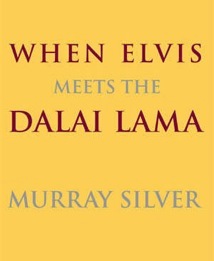 An entertaining and enlightening read.
An entertaining and enlightening read.
From promoting semi-mythic legendary music events in 1969 at The Sports Arena at age 16, to writing about Jerry Lee’s cousin child-bride Myra, to being roadie for the Dalai Lama’s possessions on tour, Murray Silver has had an almost unbelievable life. And he tells it very interestingly. A book blurb says he is,” the missing link between Tom Robbins and Carlos Castenada – from Dr. Hunter S. Thompson.
http://bonaventture.com/whenelvis_desc.htm
Good friends and helpers of the project. Great store for craft and art.
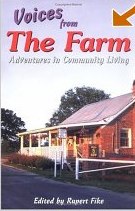 Voices from the Farm: Adventures in Community Living (Paperback)
Voices from the Farm: Adventures in Community Living (Paperback)
by Rupert Fike
Really interesting story about folks who didn’t just dream about going back to the land and creating a peaceful community. Yaah Rupert, all the way from 13th St. Workshop in Non-Violence.
Thanks for reading my book. I looked over your web site and it looks as if you are doing interesting stuff out there. I was in Georgia in the last 60s and I remember how long hair meant something there it never meant in California or outside the South. The brotherhood was real and the danger was real.
Anyway, thank you. Tim Sandlin
Kerry J. Thornley
Hippie Tech
Before there was an internet, people had to scour old books to find skills and items abandoned to time. The movement to do it yourself extended to urban and communal living. Stewart Brand recognized this need for information and created the Whole Earth Catalog, access to Tools. It fed your head with ideas and tools with which to accomplish dreams. Stewart was part of the early silicon valley modem bulletin board that connected major universities with Darpa connections and became the progenitor of the web.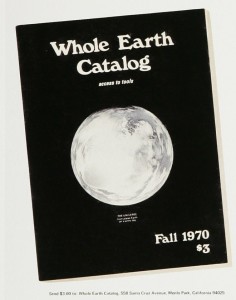
By the way the committee to set standards to ease communications that became the internet WAS chaired by Al Gore.
Light shows and concerts advanced the technology of live performances with items like monitors (Thanks to Owsley) and better amplification.
Hippies loved novelty and new toys, but had a love-hate relationship with technology, fearing the plastic disposable society would make them Plastic People. Some turned their back on all technology and moved to rural communes that ran like the 19th century or earlier.
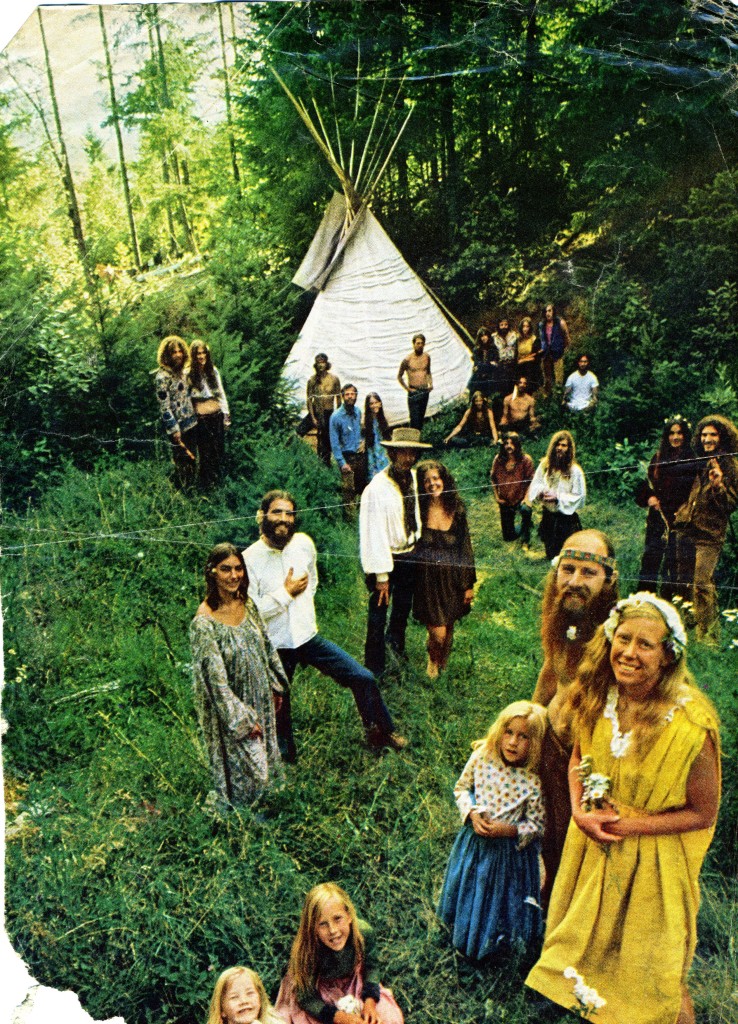
But others gathered in grarages to make screens that showed colors in response to music, or made blueboxes to defeat long-distance charges and went on to found Apple Computer.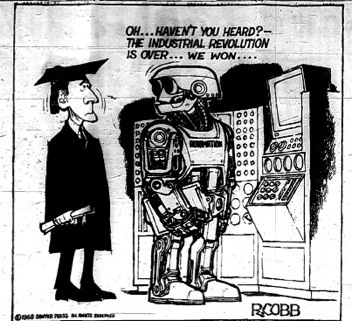
Celebrating the 40th Anniversary of the Summer of Love by Paul Krassner
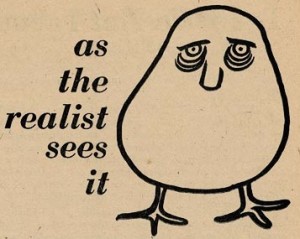 Actually, the Summer of Love in 1967 was born on October 6, 1966, the day that LSD became illegal. In San Francisco, at precisely two o’clock in the afternoon, a cross-fertilization of mass protest and tribal celebration took place, as several hundred individuals simultaneously swallowed tabs of acid while the police stood by helplessly. Internal possession was not against the law. The CIA had originally envisioned using LSD as a means of control, but millions of young people became explorers of their own inner space. Acid was serving as a vehicle to help deprogram themselves from a civilization of insane priorities. The nuclear family was exploding. Extended families were developing into an alternative society.
Actually, the Summer of Love in 1967 was born on October 6, 1966, the day that LSD became illegal. In San Francisco, at precisely two o’clock in the afternoon, a cross-fertilization of mass protest and tribal celebration took place, as several hundred individuals simultaneously swallowed tabs of acid while the police stood by helplessly. Internal possession was not against the law. The CIA had originally envisioned using LSD as a means of control, but millions of young people became explorers of their own inner space. Acid was serving as a vehicle to help deprogram themselves from a civilization of insane priorities. The nuclear family was exploding. Extended families were developing into an alternative society.
There had always been a spirit of counterculture, taking different forms along the way. Just as the beats had evolved from the bohemians, the hippies were now evolving from the beats. No longer did you have to feel like the only Martian on your block. There were subcommunities developing across the country. “Make love, not war” had become more than a simple slogan. The banning of LSD also affected Bay Area underground papers. The political Berkeley Barb got psychedelicized and the psychedelic San Francisco Oracle got politicized. The CIA’s scenario had backfired.
The blossoming of the flower children–encompassing sex, drugs and rock’n’roll–was at its core a spiritual revolution, with religions of repression being replaced by religions of liberation, where psychotropic drugs became a sacrament, sensuality developed into exquisite forms of personal art, and the way you lived your daily life demonstrated the heartbeat of your politics. There was an epidemic of idealism. Altruism became the highest form of selfishness.
Greek philosopher Socrates said, “Know thyself.” Novelist Norman Mailer said, “Be thyself.” And the ’60s counterculture said, “Change thyself.” Comedian George Carlin–who had entered show biz in the late ’50s, wearing a suit and tie, performing traditional stand-up schtick–started surfing on that wave. He reinvented himself visually–jeans, T-shirt, beard, ponytail–and acknowledges that smoking marijuana really helped him to fine-tune his material.
“My comedy changed because my life changed,” he says. “The act followed what was going on in me. Humor is very subjective, and what I was doing on stage didn’t match up with what was going on in my life or the country–1967 was the Summer of Love, it was the height of the cultural revolution–love, peace, free sex, all crested that summer. Everything was changing. I was playing big shows like Jack Paar and Ed Sullivan, but inside I was anti-authority and I hated that shit. Parents might not have been able to relate, so I went to the kids. I was using my act to further my ideas about the times.”
The mainstream media began to catch up with a whole new generation of pioneers traveling westward without killing a single Indian along the way. San Francisco became the focus of this pilgrimage. On Haight Street, runaway youngsters–refugees from their own famlies–stood outside a special tourist bus–guided by a driver “trained in sociological significance”–and they held mirrors up to the cameras pointing at them from the bus windows, so that the tourists would get photos of themselves trying to take photos of hippies. When Time magazine decided to do a cover story on hippies, a cable to their San Francisco bureau instructed researchers to “go at the description and delineation of the subculture as if you were studying the Samoans or the Trobriand Islanders.”
This was at a time when a rumor that you could get legally high from smoking dried banana skins was eagerly spread across the country. In San Francisco, there was a banana smoke-in, and an entrepreneur started a successful banana-powder mail-order business, charging $5 an ounce. Agents from the Bureau of Narcotics and Dangerous Drugs headed for their own laboratory, faithfully cooking, scraping and grinding thirty pounds of bananas, following a recipe published by the underground weeklies. For three weeks the FDA utilized apparatus that “smoked” the dried banana peels. The Los Angeles Free Press promoted another hallucinogenic–pickled jalapeno peppers, anally inserted. All over southern California, heads were shoving vegetables up their asses. After I mentioned on stage that the next big drug would be FDA, sure enough, Time reported that there would be “a super-hallucinogen called FDA.” Silly me, I thought I had made that up.
And then there was Newsweek. Kate Coleman, who, before graduating from UC-Berkeley, was busted at a sit-in by the Free Speech Movement, got a job there in New York.
“In the summer of 1967,” she recalls, “Newsweek indirectly bought enough grass and paraphernalia to warrant a felony sentence in New York of one to 15 years. Only three years behind the times, it was decided to do a cover story on marijuana, and naturally I was assigned to the story. I went down to the Lower East Side’s Psychedelicatessen and purchased two beautiful water pipes, a hash pipe, roach holders, a dozen packets of cigarette papers, and a few little psychedelic toys. What a haul!
“I also bought two ounces of Acapulco Gold and one ounce of Panama Red from my favorite exclusive downtown dealer. Newsweek footed the whole bill without a ripple, and I got the payola of a lifetime. But it didn’t end there. The fact that marijuana was to be legitimized twixt the pages of Newsweek gave rise to unexpected curiosity on the part of both the senior editor and the writer of the piece, both of whom decided, independent of each other, that their respective editing and writing would lack verisimilitude unless they tried the stuff. I was approached by people all over the magazine, asking me to get them some pot.”
A highlight of the Summer of Love for me was an acid trip at the 1967 Expo in Montreal. I had been invited to speak at the Youth Pavilion and also to give my impressions, on Canadian TV, of the United States Pavilion, a huge geodesic dome engineered by Buckminster Fuller. Before entering the U.S. pavilion, which was guarded by marines who had attended a special Protocol School, I ingested a 300-microgram tab of LSD.
“This pavilion is really beautiful, with all these flowing colors,” I said to the interviewer. “You don’t see them, but I do. There’s an interesting kind of symbolism, though. These military men, combat marines, I don’t see that in any other pavilion, military men guiding you around, saying, ‘Yes, there’s the Little Girls room’ or ‘Would you like to touch my medals for killing Viet Cong?’ I think it’s very appropriate that we should be standing right here by the largest escalator in the western hemisphere, since my country is the greatest escalator of the war in southeast Asia….What I would like to do, as a gesture of my commitment–since I feel there’s something lacking in the American Pavilion, which is a certain recognition of the fact that the country is really split in two–since we’re a nation of symbols, I would like to indulge in a symbolic act. I have my draft card here.”
“You’re kidding.”
“Would I kid about a thing like that?”
“It’s his draft card.”
(It was really a photostat of my draft card, since I burned one each time I was invited to speak at a college campus.)
“And I’ll hold a match here.”
“Are you sure you know what you’re doing?”
“If I may.”
“He’s burning his draft card. How about that for a scoop, hey?”
“Now, the reason I’m doing this is, again, because we get hung up on symbols. People will be more upset about this than about the fact that children are being burned alive in Vietnam….”
The marine lieutenant called his captain. When the interview was finished, the captain told me it was against the law to burn my draft card. So I took out my draft card and showed it to him.
“But he burned it,” the lieutenant insisted. “I saw him, sir. He burned it.”
“I burned a photostat of my draft card. So I lied on television. That’s not a crime. People do it all the time.”
“It’s also against the law to make a copy of your draft card,” the captain said.
“Well, I destroyed the evidence.”
I knew that political demonstrations were barred at Expo, but I had managed to smuggle one in, along with the acid. The interview was labeled an “incident,” and there was a heated argument between the U.S. Information Agency and the Canadian Broadcasting Company, but the incident was already on tape, so now it had become a free-speech issue. It would be shown on TV that night and become front-page news in Montreal papers the next day.
Just as I was leaving the pavilion, a band struck up a fanfare. I made the mistake of projecting my own feelings, and suddenly I was convinced that LSD had been sprayed into the air, that everybody was tripping, that peace and love were breaking out all over the world at that very moment. As I was walking along, I started smiling at families and waving to them, and they were smiling at me and waving back. But then a core of reality came to the surface, the force of my own feedback made me turn around, and I saw that those same people were now pointing at me. What an asshole! I still blush with embarrassment.
Now, a non-profit organization, the Council of Light, has organized a free 40th Anniversary all-day concert to be held at Golden Gate Park on September 2 “intended to not only celebrate the music, but also resonate with the consciousness raising of the ’60s as represented by eight goals chosen to receive donations and publicity from the concert. They are: Environmental Sustainability, Relieve Poverty & Hunger, Raise Education, Promote Gender Equality, Reduce Child Mortality, Improve Maternal Health, Combat AIDS, and create a Global Partnership for Development in undeveloped nations. Charities chosen by the Council representing these eight goals will receive all money raised beyond basic costs of the production.”
For information, check out summeroflove40th@yahoo.com. But you don’t have to be present at the concert to celebrate this phenomenon that occurred four decades ago–an evolutionary jump in consciousness–exploding out of the blandness and repression of the Eisenhower-Nixon years. Currently, a mass awakening, exploding out of the blandness and repression of the Bush-Cheney years, seems to be happening again. Or is that just wishful thinking?
* * *I asked several folks to recollect an aspect of what the Summer of Love meant to them.
Stephen Gaskin–author of Cannabis Spirituality: When the Human Be-In of January 1967 at Golden Gate Park was conceived, it was against the background of sit-in’s and teach-in’s and was somewhat inspired by the civil rights movement. It was like a true rumor when the word on Haight Street was that all the hippies were supposed to come out to the Polo Field and see us all together.
I walked up to that gang of hippies filling the meadow, and I had to sit down and lean against a tree as if I was coming on to acid. While I was coming on, a mounted policeman rode up to look at the crowd and was addressed by a woman, also surveying the crowd.
She said, “Officer, my son is down there. Help me find him.”
The officer replied, “Ma’am, everybody down there is smoking marijuana. I can’t go down there.”
Later on, down by the stage, I saw a guy who seemed to be trying to hypnotize a young woman who was on acid by waving an incense stick in her face and rapping on her intently. I thought he was messing with her mind and she seemed to be in trouble. I tapped her on the shoulder to get her attention and said, “Do you need to be rescued?”
She said, with evident relief, “Yes, please!”
She and I walked over to the edge of the crowd and sat on the grass and she laid her head on my knee and finished coming on until she felt strong enough to go dig the rock and roll.
It was the first time we got to see how many of us there were.
Stewart Brand–publisher of The Whole Earth Catalog: As I recall, it was either late in 1967 or early next year that just the torso of the lovable dope dealer Superspade was found hanging from a tree out by Ocean Beach, signalling that the Mob was taking over from the amateurs, and the high times were not over, but the luv was.
The displaced amateur dealers, now skilled entrepreneurs, took their budding business acumen elsewhere in the 1970s, starting all manner of companies, such as Whole Earth Access (same name as my Catalog, quite different people).
Roberta Price–author of Huerfano: a memoir of life in the counterculture: In the summer of 1967, between junior and senior year, I got job in London as assistant to the Young Ideas editor at British Vogue. I was a very young 21, but nobody asked if I had any ideas. I got sandwiches for Mandy Clapperton, the acting Young Ideas editor (the previous one was out with hepatitis). I went for clothes at Mary Quant and peeked over the office partition as a Beatle or Mick Jagger and Marianne Faithful walked through the office. They all seemed frail and vulnerable in person.
My U.S. friend Pam was studying in London that summer, and at night we swung through Swinging London together. At Granny Takes a Trip, I bought a white crocheted dress that stopped a few inches below my crotch. Pam bought dope from a young Englishmen. We couldn’t find rolling papers, so Pam used tampon wrapper paper to roll joints, which worked. On Carnaby Street, we bought bubble dresses for us and Nehru jackets for the guys back home.
On weekend nights we went to the UFO, which had a constant light show and a staff who sold acid. The Liverpool Love Festival, Procul Harem, Tomorrow, the Pink Floyd, Arthur Brown, Eric Burdon and Fairport Convention played. We danced with men but couldn’t hear their names; the flashing lights were enough to give you an epileptic fit. The crowd was a bit international, the space was dark, flash lit, grimy, vast.
Pam and I got $79 round-trip tickets on a German student train from London to Athens. It took three days, and all day long they piped American rock music over the sound system. Their musical taste wasn’t as good as at the UFO. I heard “When you go to San Francisco, be sure to wear some flowers in your hair” at least 50 times. We danced in the aisles anyway.
In Greece, we rented a VW bug with two young Englishmen we met on the train. We drove around for a week, camping out at Delphi on the full moon. I was restless and dreamed of the Oracle. She was younger than I but looked like a hippie with her ethnic leather sandals and the wreath in her hair. She told me that after that summer, everything would be different. I already knew it.
Darryl Henriques–author of 50 Ways to Pave the Earth. I began my professional show business career in 1967 when I joined the San Francisco Mime Troupe, earning the princely sum of $5 a performance. We were doing an antiwar Commedia play called The Military Lover. The Fillmore, the Grateful Dead, Bob Dylan, the Doors, the Beatles, the Stones, the Byrds, the Animals–all of God’s creatures–you remember, don’t you? That was the year Captain Kirk hot-rodded around the galaxy in the Starship Enterprise and Dustin Hoffman graduated with Mrs. Robinson. Allen Ginsberg was Howling, Paul Krassner was realizing, Abbie Hoffman was freeloading, and Scoop Nisker on KSAN in San Francisco was telling everyone, “If you don’t like the news, then go out and make some of your own!”
We took the show on the road ($65 per week, a 1300% raise) and traveled across the country performing in theaters and colleges. It seemed every time we got to a college Dow Chemical had just been there, was coming there or, in the case of the University of Wisconsin, they were there. Dow was going to colleges across the country to recruit students to assist them in the crucial task of fabricating napalm to be used in Vietnam.
Next morning we went to the demonstration at the Commerce building, and at one point someone picked up a bugle and blew the signal to charge. The students immediately surrounded the building, and a group of them went in to conduct a peaceful sit-in. The campus police were unable to convince the protesters to leave, so the Chancellor called in the city police who took it upon themselves to beat the students with their nightsticks and spray them with tear gas, sending 30 of them to the hospital. It was officially the first violent protest against the peaceful protesting of the Vietnam War and Dow Chemical.
The irony was that according to the public relations director of Dow, they “could not have gotten better advertising” than student protests. They even started a company publication called the Napalm News. Not only that, but more students signed up to be interviewed, and on many campuses it became a “badge of honor” to be interviewed. Dow was justifiably infamous for their production of napalm, but their product that did more damage to people and the environment was Agent Orange. It was an equal opportunity weapon since it poisoned American servicemen as well as Vietnamese peasants. Better death through chemistry.
Little did I know how crucial it was for America to stop the Vietnamese from invading America. But thank God, in the end we won and now the Vietnamese are busy making our running shoes and sewing our T-shirts. You have to admit that killing over two million people to get them to make our running shoes was a bit extreme, but such are the pitfalls of the global economy.
Ken Babbs–Merry Prankster: Where were Ken Kesey and the Pranksters? They had already gone, as Peter Coyote put it, “under the asphalt.” The previous year, after two busts for marijuana, Kesey had faked a suicide and disappeared into Mexico, leaving me in charge of the bus and ramrodding the Acid Tests in LA which came to a screaming halt the day before LSD became illegal when the bus and the Pranksters slunk out of town and hied off to Mexico to join up with Kesey, everyone to return to the Hoo Ess Ay when Kesey gave hisself up to the FBI and was sentenced to six months in jail.
Kesey and Paige took the fall so the Pranksters could go free, reason being to keep Neal Cassady from going to trial. He’d already been busted twice and had done two years in the Big House for two joints, and with one more conviction he’d be up for a life sentence. In the high days of the Summer of Love, the whole fershlugglnger crew cranked up the bus and drove down to the sheriff’s honor camp to visit Kesey and Paige. They parked in the lot next to the camp, speakers playing James Brown, Pranksters in their Day-Glo regalia, lined up at the gate to be checked in.
At the end of the day the bus pulled out, “Hit the Road, Jack” blaring, up the Bayshore into San Francisco to the Haight and a stop at 711 Ashbury to visit the Dead before they, too, got busted, the only appearance of the Pranksters in the Summer of Love carnival, and then it was back to Oregon, to gardening, building, kids in school, digging under the asphalt, deeper, joined by Kesey and Paige in the leaf-changing days of fall.
Mountain Girl–author of Primo Plant: Growing Marijuana Outdoors: Before the moon-shot, before Watergate, one summer a long long time ago, there was The Hippies. They came to our Fair City, from every town, every place in the country, from near and far, looking for the Haight-Ashbury. They were young, gripped with restlessness and seeking a higher way of life. They filled the sidewalks of the old neighborhood–looking, seeking, clutching old suitcases, barefoot and hungry, with no particular place to be. Girls with raccoon eyes wept in the arms of boys just out of the Scouts, as hope faded for hot food and a safe place to sleep. Exhaustion and grime settled over them, and as weeks passed, more and more came.
The local shopkeepers tried to cope, and the young stole and carried off whatever they could. Puppies on strings and kittens stuffed in pockets accompanied the march. The good folk were moved to give food, some helped the mob find sleeping space, but crime soared and frightened them. The mayor of Fair City awoke in a foul mood and ordered sweeps, and the police raided freely. Tear gas rolled over the crowded street as thousands of lives touched and found each other and eventually themselves Music and songs from sidewalk songwriters filled the smokey air as joy spilled over and changed Fair City into Hippie Heaven.
And even today, Haight Street is filled with signs, clues, artifacts, reminders of the glory days for sale in a hundred shops. Go there and see for yourself.
If you don’t know Paul Krassner, read his wiki
http://en.wikipedia.org/wiki/Paul_Krassner
You can now read The Realist issues online: http://www.ep.tc/realist/
How I came to be a Hippie. BY STEPHEN GASKIN
from Feb ’94 High Times pg. 30, 33
Well, since the editors of HT said ‘ I could have this page a few times a year. I guess I should give you a little to go on about where these opinions come from.
I guess most people don’t identify it with my hippie self, but I served with Able Company. First Battalion, Fifth Marine Regiment, in Korea in 1953 as a rifleman, a BAR man and a Fire-Team Leader, I drew combat pay and was fired on and returned fire- and carried dead and wounded friends back from no-man’s-land. I joined February 26, 1952 and was discharged on February 26, 1955.
1 went to junior college at San Bernadino Valley College and took several years getting an AA degree. But I realized I was wasting time and needed to finish school already. I went to San Francisco with new wife and baby and went to school full-time on the GI Bill, which was $135 a month with wife and kid. At that time 1 was already a latent beatnik, which only got more so during the years I went to SF State. I got my BA in 1962, and my MA in 1964. After I graduated, I taught there in creative writing and general semantics from 1964-1966,
I first began Monday Night Class in 1967 on the San Francisco State College Campus, where I had been S.I. Hayakawa’s teaching assistant. 1 happened to be the one who answered the phone when the Free Speech Movement called up from Berkeley thinking that a general semanticist would favor free speech. To my absolute astonishment. Hayakawa threw a fit that foreshadowed the right-wing force he later became in California politics. I told the guy from Berkeley, “I’m sorry baby. He doesn’t like you.”
It wasn’t till much later that I fell in with the hippie movement myself. Some of my students came to me and all but said that they liked me and all but that I didn’t know what was going on. They said that they wouldn’t be able to take me more seriously until 1 did something for them, 1 wanted to be taken seriously so I asked what it was. “First,” they said, “we want you to go see A Hard Day’s Night by the Beatles.
” Well, just as they had planned, I fell in love with John Lennon, recognized the power of youth as represented by the hippies and began my path as a hippie. The times were outrageous. There were a couple of hundred thousand hippies on the streets in San Francisco. Tripping on LSD was pandemic. Sometimes it seemed as if the whole city smelled of reefer smoke. Grass was $75 a kilo, Acapulco Gold was $250 a kilo, acid was $2.50 a hit and so was rock’n’roll. Every circle of people on the street had a joint circulating around the inside.
Like many people, I got a little strange when 1 was tripping weekly. The wife of my creative writing teacher when she saw me in my first hippie garb, beads and long hair, said: “You have gone too far!”
It wasn’t that I got fired for being a hippie. It was that I got too weird to rehire at the same time my contract expired. After two years of teaching, I went across Mexico and the Yucatan peninsula to British Honduras ( now Belize) in a 1952 Volkswagen bus. The road across the Yucatan wasn’t even bulldozed, just chain-sawed and machete’d. When I returned to San Francisco, 1 got my last voluntary haircut and tried to get rehired at SF State. Something in me wasn’t serious, though, and I found myself in my job interview, spreading my coattails and curtsying as I said, “Am I square enough for you now?”
I was not rehired and I don’t blame them. It was obvious that my major interest was getting high.
When, in the normal course of getting stoned. I wanted to take counsel with fellow trippers. I went to lan Grand who headed the Experimental College. He gave me Monday night in the Gallery Lounge at San Francisco State- This was the founding of Monday Night Class in 1967. The idea was to compare notes with other trippers about tripping and the whole psychic world. We began as 12 people, dropped to six and eventually grew into a huge meeting of as many as 1,000 or 1,500. We left the Gallery Lounge and went to the Glide Church and then to The Straight Theater on Haight Street and then to Chet Helm’s Family Dog on the Great Highway. We discussed love. sex, dope, God, god. war, peace, enlightenment, mind cop, free will, astrology. theology, diet, birth control and what have you all in a stoned, truthful, hippie atmosphere. We studied religion. psychology, fairy tales, legends, children’s stories, the I-Ching and tripping.
It ‘was easy to tell when we were onto something hot; I could see the expressions move across those thousand faces like the wind across a wheat field. It was like being inside a computer with a thousand parallel processors.
Now some people may think that I am not as religious as i used to be and it is true that on Mondays, Wednesdays and Fridays I might be an agnostic, and on Tuesday and Thursdays, a primitive animist, while partying down on Saturdays and sometimes sitting Zazen on Sundays, There is, however, something I have to say. At no time do I subscribe to any Brand Name religions.
I love the ethical teachings of most religions and I love the psychedelic testimony of their saints. I do not believe in any of their dogmas. I am a believer in free will. I am not a believer in predestination. I think a belief in prophecy robs us of 01 free will.
I think each one of us has a nonshirkable obligation to figure out the world on our own as best we can. The way we behave as result of that investigation is our real and practiced religion.
I consider myself to be an ethnic hippie. I know that the hippies were preceded by the beatniks, the bohemians, the nihilists, Rimbaud, Joyce, Voltaire and on back to Socrates, but the wave of the revolution that spoke to me was the hippies. Rock’n’roll lights my soul and gives beat to the Revolution.
I see by the watching machine that LSD is making a comeback. I find some hope in this and, I admit, some trepidation. I was called for an interview the other day and I found myself trying to explain the difference between how we felt about acid when we were the Revolution and it was fun to freak ’em out and how it felt when we were trying to hold our own civilization together here on the Farm. We didn’t take acid on the classic Farm from 1970 to 1983, and it is still not our policy on the new Farm.
I am quite concerned about the lack of good contemporary tripping instructions in this Acid Renaissance. The medical establishment is still likely to label teenagers with a temporary acid psychosis as “bipolar paranoid schizophrenics,” load the poor kids up on Haldol or Thorazine until they twitch and drool, and mark them for life with a label they will never live down. You would think that they would know by now that most LSD-stoned people dry out over a period of time and don’t need heroic measures as much as they need support and love while they re- enter ordinary life.
all that typical hippie junk no one believes in anymore. Right?
Posted by CN Staff on August 22, 2007 at 09:09:59 PT
By Mark Morford, SF Gate Columnist
Source: SF Gate
USA — Go ahead, name your movement. Name something good and positive and pro-environment and eco-friendly that’s happening in the newly “greening” of America and don’t say more guns in Texas or fewer reproductive choices for women because that would defeat the whole point of this perky little column and destroy its naive tone of happy rose-colored optimism. OK?
I’m talking about, say, energy-efficient lightbulbs. I’m looking at organic foods going mainstream. I mean chemical-free cleaning products widely available at Target and I’m talking saving the whales and protecting the dolphins.
I mean yoga studios flourishing in every small town, giant boxes of organic cereal at Costco and the Toyota Prius becoming the nation’s oddest status symbol. You know, good things.
Look around: We have entire industries devoted to recycled paper, a new generation of cheap solar-power technology and an Oscar for “An Inconvenient Truth.” Even the soulless corporate monsters over at famously heartless joints like Wal-Mart are now claiming that they really, really care about saving the environment because, well, “it’s the right thing to do” (read: “It’s purely economic and all about their bottom line”).
There is but one conclusion you can draw from the astonishing pro-environment sea change happening in the culture and (reluctantly, nervously) in the halls of power in D.C., one thing we must all acknowledge in our wary, jaded, globally warmed universe: The hippies had it right all along.
All this hot enthusiasm for healing the planet and eating whole foods and avoiding chemicals and working with nature and developing the self? Came from the hippies. Alternative health? Hippies. Green cotton? Hippies. Reclaimed wood? Recycling? Humane treatment of animals? Medical pot? Alternative energy? Natural childbirth? Non-GMA seeds? It came from the granola types (who, of course, absorbed much of it from ancient cultures), from the alternative worldviews, from the underground and the sidelines and from far off the grid and it’s about time the media, the politicians, the culture as a whole sent out a big, hemp-covered apology.
Here’s a suggestion, from one of my more astute ex-hippie readers: Instead of issuing carbon credits so industrial polluters can clear their collective corporate conscience, maybe, to help offset all the damage they’ve done to the soul of the planet all these years, these commercial cretins should instead buy some karma credits from the former hippies themselves. You know, from those who’ve been working for the health of the planet, quite thanklessly, for 50 years and who have, as a result, built up quite a storehouse of good karma. You think?
Of course, you can easily argue that much of the “authentic” hippie ethos — the anti-corporate ideology, the sexual liberation, the anarchy, the push for civil rights, the experimentation — has been totally leached out of all these new movements, that corporations have forcibly co-opted and diluted every single technology and humble pro-environment idea and Ben & Jerry’s ice cream cone and Odwalla smoothie to make them both palatable and profitable. But does this somehow make the organic oils in that body lotion any more harmful? Verily, it does not.
You might also just as easily claim that much of the nation’s reluctant turn toward environmental health has little to do with the hippies per se, that it’s taking the threat of global meltdown combined with the notion of really, really expensive ski tickets to slap the nation’s incredibly obese butt into gear and force consumers to wake up to the gluttony and wastefulness of American culture as everyone starts wondering, “Oh my God, what’s going to happen to swimming pools and NASCAR and free shipping from Amazon?” Of course, without the ’60s groundwork, without all the radical ideas and seeds of change planted nearly five decades ago, what we’d be turning to in our time of need would be a great deal more hopeless indeed.
But if you’re really bitter and shortsighted, you could say the entire hippie movement overall was just incredibly overrated, gets far too much cultural credit for far too little actual impact, was pretty much a giant excuse to slack off and enjoy dirty, lazy, responsibility-free sex romps and do a ton of drugs and avoid Vietnam and not bathe for a month and name your child Sunflower or Shiva Moon or Chakra Lennon Sapphire Bumblebee. This is what’s called the reactionary simpleton’s view. It blithely ignores history, perspective, the evolution of culture as a whole. You know, just like America.
But, you know, whatever. The proof is easy enough to trace. The core values and environmental groundwork laid by the ’60s counterculture are still so intact and potent that even the stiffest neocon Republican has to acknowledge their extant power. It’s all right there: Treehugger.com is the new ’60s underground hippie zine. Ecstasy is the new LSD. Visible tattoos are the new longhairs. And bands as diverse as Pearl Jam, Bright Eyes, NIN and the Dixie Chicks are writing anti-Bush, anti-war songs for a new, ultra-jaded generation.
And, oh yes, speaking of good ol’ MDMA (Ecstasy), even drug culture is getting some new respect. Staid old Time mag just ran a rather snide little story about the new studies being conducted by Harvard and the National Institute of Mental Health into the astonishing psycho-spiritual benefits of goodly entheogens such as LSD, psilocybin and MDMA. Unfortunately, the piece basically backhands Timothy Leary and the entire “excessive,” “naive” drug culture of yore in favor of much more “sane” and “careful” scientific analysis happening now, as if the only valid methods for attaining knowledge and an understanding of spirit were through control groups and clinical, mysticism-free examination. Please.
Still, the fact that serious scientific research into entheogens is being conducted even in the face of the most anti-science, pro-pharmaceutical, ultraconservative presidential regime in recent history is proof enough that all the hoary hippie mantras about expanding the mind and touching God through drugs were onto something after all (yes, duh). Tim Leary is probably smiling wildly right now — though that might be because of all the mushrooms he’s been sharing with Kerouac and Einstein and Mary Magdalene. Mmm, heaven.
Of course, true hippie values mean you’re not really supposed to care about or attach to any of this, you don’t give a damn for the hollow ego stroke of being right all along, for slapping the culture upside the head and saying, “See? Do you see? It was never about the long hair and the folk music and Woodstock and taking so much acid you see Jesus and Shiva and Buddha tongue kissing in a hammock on the Dog Star, nimrods.”
It was, always and forever, about connectedness. It was about how we are all in this together. It was about resisting the status quo and fighting tyrannical corporate/political power and it was about opening your consciousness and seeing new possibilities of how we can all live with something resembling actual respect for the planet, for alternative cultures, for each other. You know, all that typical hippie junk no one believes in anymore. Right?
Tripping on the Strip, 1967
Tripping on the Strip, 1967
– Rupert Fike
Even though we knew the real hippies were far away,
on Haight Street, we took comfort in at least being freaks
to the white-bread gawkers who cruised the Strip
every weekend, whole families pointing from station wagons,
and then later came the worse-off cars with drunks leaning out –
Hey . . . Commie! You a boy or a girl?
(look out for that beer can!)
We knew we weren’t Commies either
because, for one thing, Communists didn’t take acid,
which was pretty much our job along with faking
the Southern accent of local winos
(Midtown at that time was very much poor-white),
so yeah we got high, we paraded,
we crashed,
we woke up groggy and started it all again . . .
taking to these city blocks when our cat-box stinky rooms
became suffocating, when the need for milk or bread or papers
propelled us out into danger, onto the Strip
where we exposed ourselves for hassles
and sometimes violence, not to mention the occasional
arrests for “violation of pedestrian duties”
if we so much as put one foot off the curb while selling the Bird.
Then came Jail. Where you sat . . . until somebody
tracked down Alley Pat Patrick, the one Decatur Street
bondsman who bailed out protestors and hippies.
For spiritual guidance we had two choices –
Mother David of the Catacombs with his pagan,
maternalistic embrace of all mixed-up hippie waifs . . .
Mother David, queer of course,
but in those pre-gaydar days he was simply
the matriarch of our hard-core 14th street scene.
Meanwhile . . . over on 10th St. was Jesus and Bruce Donneley
with his suburb-friendly 12th Gate coffee house –
paisley evangelicals offering tea, cider, the blues,
and an upstairs poster shop which was a great place
to hit on weekend hippie-chicks
who might possibly agree to come check out
your collection of black-light posters.
Midway between the Catacombs and the 12th Gate
was Henry and Sue Bass’s Workshop in Non-Violence,
the politics of peace working hard to sprout
in this backwater of a great confused country torn by war,
Henry and Sue, who tried to guide us toward activism,
who helped find us a room at 174 13th Street –
home to an unlikely collective of street-theatre types,
SCLC workers and fellow freaks who lived
to stick their heads between Iron Butterfly speakers
in the basement of that craftsman house
where politicos and lotus-eaters had been thrown together
by necessity . . . unlike Cambridge and Berkeley where
activists and hippies kept their distance . . . what was
not an option in Atlanta at that time.
So some of us who had grown up in Georgia were now
breaking bread each night with the very people
our fathers had called, Outside Agitators! –
horn-rimmed civil-rights workers like Jim Gehres
who came south from Oberlin College to register voters,
but who instead became Dr. King’s chauffer
because the great man felt safe with Jim.
And really, we shouldn’t have given Jim that acid . . .
but we did, we did
(what rendered him incapable of driving the next day),
and we got into trouble with some SCLC types
who said that we had become
part of the problem not part of the solution
(the unkindest cut of all).
But, No, it hadn’t been our fault – the real problem was
those orange double domes cut with truck-stop speed
that were out on the Strip – That was what had messed
us up so bad, That was what had kept
our tribe of wannabe Buddhists
wandering the early morning Atlanta streets
like Sadhus, Indian holy men with no home,
only a vision, and yeah,
we had a vision all right,
but after six hours we just wanted our vision gone . . .
enough already with the oneness thing!
And as we walked the side streets of the Strip that night,
all we could see was concrete, a paved-over planet,
humankind’s connection to the Earth cut off
by aggregate, same as our mental pathways were cut off.
Around 2 am we saw a redneck drag queen hailing a cab,
her accent revealing her Appalachian roots,
Y’all are some fucked-up flower-children.
Y’all’s eyeballs are fixing to pop!
And when a Blue and Grey cab stopped,
we saw that the taxi was being driven
by a coyote in a sports shirt, so we started running,
running down 12th Street into the park,
but it was scary there, too full of cop cars
and cruising high school jocks looking to gay-bash.
Yet we so needed some neutral dirt,
a place we could root our butts to
and allow this terrible energy to go back to ground . . .
we walked deeper into the city night to a corner
on Juniper with grass, bushes, a place to sit,
and as dawn brought up its stage lights we saw
we’d grouped around a Georgia historical marker,
James Andrews –
(some of us could now read)
for it was on or near this spot in June 1862
that he and five others were hung
by the neck until dead (and we thought we had troubles) –
Andrews Raiders . . . the Great Locomotive Chase . .
the Congressional Medal of Honor created
for the men marched here,
likely to muffled drumbeats,
and the scaffolding – it must have been on that little rise,
its trap door waiting . . . .waiting to spring,
and when it sprang what were the noises . . .
squeaks then crowd gasps, that’s how it goes isn’t it,
what was much worse than our little
chemically-induced spiritual crisis.
Gradually it became fully light.
People were going to work in cars.
It had made sense that we were All One a few hours ago.
But now it didn’t.
We were tired. We were confused.
We so wanted to come down.
Rupert Fike’s poems and short fiction have appeared in Rosebud (Pushcart nominee), The Georgetown Review, Snake Nation Review (winner 2006 single poem competition), The Atlanta Review (forthcoming), Natural Bridge, FutureCycle, Borderlands, storySouth, The Cumberland Poetry Review, and others. A poem of his has been inscribed in a downtown Atlanta plaza, and his non-fiction work, Voices From The Farm, accounts of life on a spiritual community in the 1970s, is now available in paperback.
stomp rights
by Louis Clata
The New York Times – April 10, 1970
The world rights to “Stomp”, the multimedia protest musical environment entertainment, have been acquired by Michael Butler, producer of Hair.
Mr. Butler plans to present the show, now playing at Joseph Papp’s Public theater, on the West Coast next fall and then bring it to Broadway next season. “Stomp” is the creation of a group of young, disaffected Southerners who met and developed the musical at the University of Texas and then came north with it.
The producer says that he is contemplating some changes in “Stomp” and will work on them in conjunction with Douglas Dyer.
The sale of the world rights to “Stomp” will not affect the show’s commitment to a four month festival tour in Europe under the auspices of the New York Shakespeare Festival. The tour begins May 21 in Paris, where it will be presented for nine days as the American entry at the Festival of Nations.
Copyright The New York Times Company. All rights reserved
